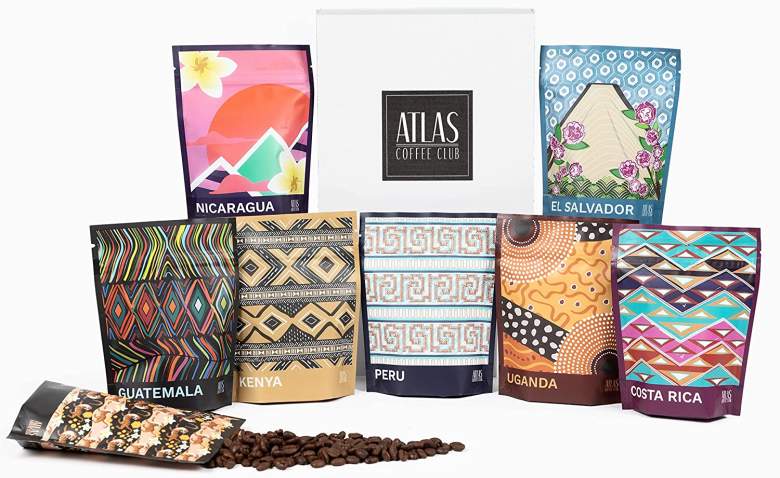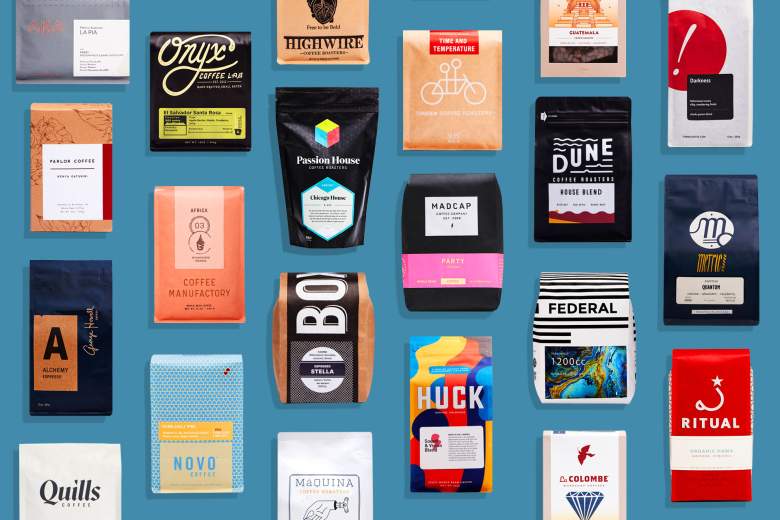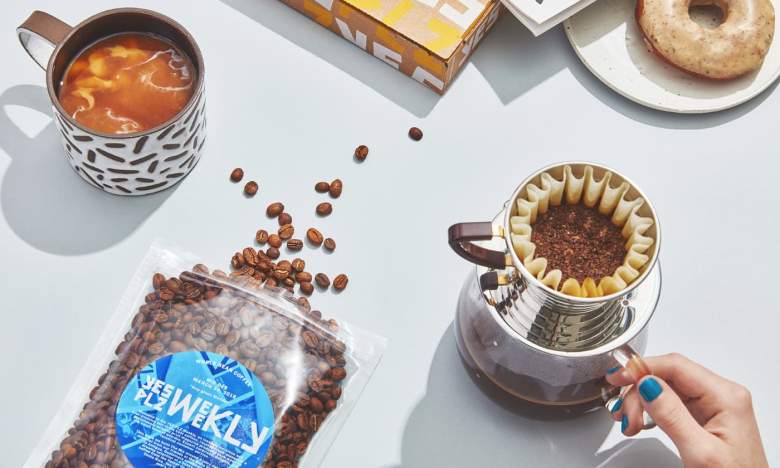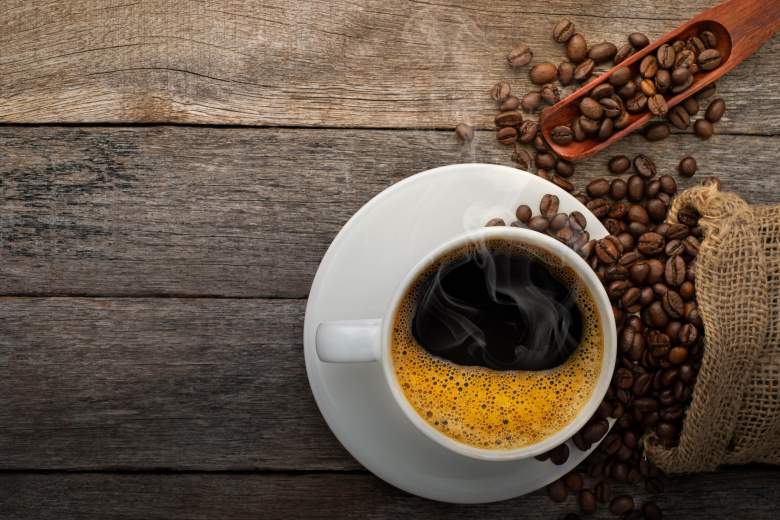
Looking for some higher quality coffee than you can get at the grocery store? Sick of the bitter Folgers and bored with the never-changing Starbucks brews? A coffee subscription may be the right option for your bean juice needs.
Below, you’ll find coffee subscriptions of all different types have been hand-selected by our staff of coffee connoisseurs, who have various flavor and brewing preferences. These are the best coffee subscriptions available right now:
Bean Box
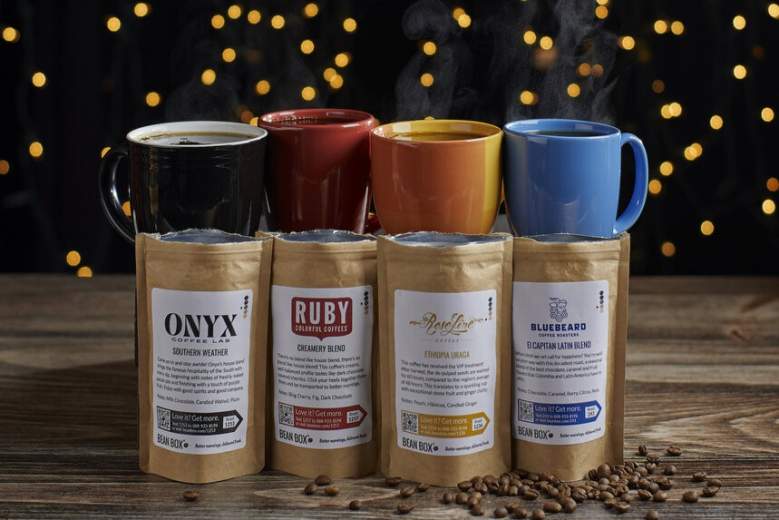
Bean Box hand-selects their coffees and roasts their beans fresh in Seattle before shipping to customers. They have beans sourced from throughout the globe, including areas in Brazil, El Salvador, and Uganda.
When you sign up for a subscription, you can choose whether you want the whole bean or freshly ground and your preferred flavor experience. Bean Box’s curation team will handle the rest!
Enjoy Your First Bean Box For Just $5 + Free Shipping
Atlas Coffee Club
Atlas Coffee Club sources their coffee beans from growers worldwide, allowing you to go on a coffee-experience-adventure.
All their coffees are single-origin and cannot be found at any retailers. They also allow you to customize how your beans are roasted.
Atlas Coffee Club offers coffee from the following regions:
- Costa Rica — Tasting Profile: Sweet cream and milk chocolate
- Brazil — Tasting Profile: Coconut, vanilla, and chocolate
- Ethiopia — Tasting Profile: Raspberry, blueberry, and sweet chocolate
- Papua New Guinea — Tasting Profile: Florals, green apple, and nougat
- Columbia — Tasting Profile: Plum, grape, toasted marshmallow, graham cracker
- Indonesia — Tasting Profile: Earthy, bell pepper, rich chocolate
- Peru — Tasting Profile: Chocolate and toffee
- Kenya — Tasting Profile: Grapefruit, citrus, chocolate
- Guatemala — Tasting Profile: Cherry and chocolate
- Honduras — Tasting Profile: Dark chocolate and graham cracker
Atlas Coffee Club is on our list because you can experience various tasting profiles and coffee regions within your coffee subscription. This diversity allows you to develop a more well-rounded and cultivated personal knowledge of coffee.
You can choose either whole bean or ground coffee, giving you a highly preferential experience.
Sign-Up For Atlas Coffee Club Here
Trade Coffee
Trade Coffee has a fun way of making its subscription individualized. The company offers you a coffee quiz to determine the best coffee choices based on your preference. You can customize your order frequency, grind type, and how many bags you want to receive per shipment.
Trade Coffee scouts the U.S. to find the best coffee roasters. By doing so, they are empowering locally owned, small businesses. All of the coffee roasters’ trade sources take their Roaster Pledge, which means they promise to maintain high standards and ethical practices, high-quality production, and sustainable relationships.
Every bag you receive from Trade goes from green beans to custom roast, shipped to you within 24 hours. Experience fresh coffee at its finest.
Trade offers decaf, espresso, cold brew, and other grounds. You can get roast profiles in light, light-medium, medium, medium-dark, or dark.
Their coffee beans are sourced from 25 different regions, offering you a varied experience in a single subscription.
Cooper’s Cask Coffee
If you like your coffee on the stronger side and are a fan of barrel-aged coffees, you won’t be disappointed with everything that Cooper’s Cask Coffee has to offer.
While their single-origin coffees are incredible, it’s their Kentucky Bourbon Barrel Aged coffee that is my personal brew of choice. It’s a medium-dark roast that’s aged 45-60 days in a Kentucky Bourbon Barrel before shipping to your door. This creates a super-interesting taste profile that has a hint of cocoa and some dark fruity notes that are followed by a subtle bourbon finish. Absolutely delicious.
One thing I love about Cooper’s Cask is that you can subscribe to any of their coffees when you go to buy it on their site (which will save you 10%). Coffees are available in whole bean or a few different types of grinds: auto drip, espresso, or French press. On top of that, you’ll find that some of their coffees also come in convenient K-cups.
Try Cooper’s Cask Coffee Here.
Equator
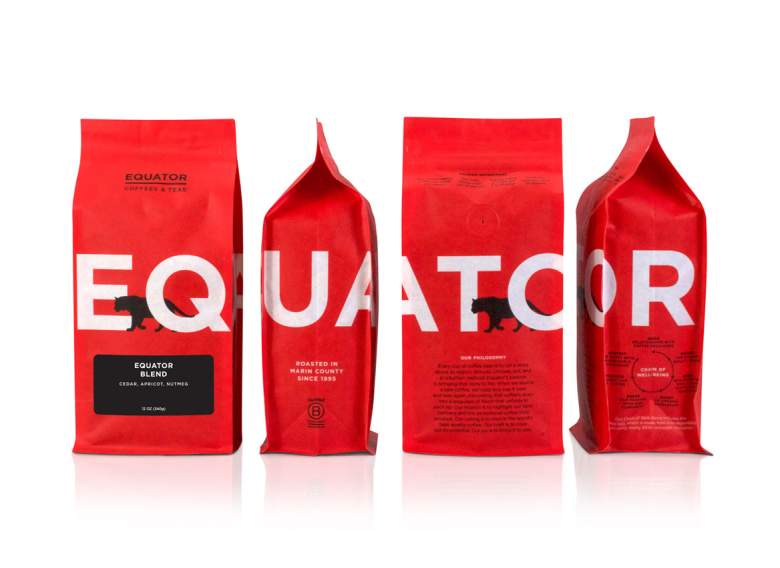
Equator Coffees started in 1995 as a coffee roaster and shop. They source their beans responsibly from farmers worldwide and roast them themselves.
You can browse based on curated selections, best sellers, or classics when you sign up for a subscription. They offer light, medium, medium-dark, and dark roast options in a variety of flavor profiles.
If you’re looking to try them before subscribing, you can order single bags of Equator coffee right from their online shop. I personally recommend the absolutely incredible Tigerwalk Espresso.
Subscribe to Equator Coffee Here.
MistoBox

MistoBox works with over 60 artisan coffee roasters across the country with over 600 coffee varieties to choose from. When you start a subscription with them, they pair you up with a coffee curator to help find the best flavor for you.
You can filter your coffee search based on roast, type (single-origin vs. blend), tasting notes (chocolate vs. fruity), origin region, or processing type (sustainably sourced vs. organic).
Their transparency and filtering options allow you to pinpoint exactly the type of coffee you want to order.
Craft Coffee
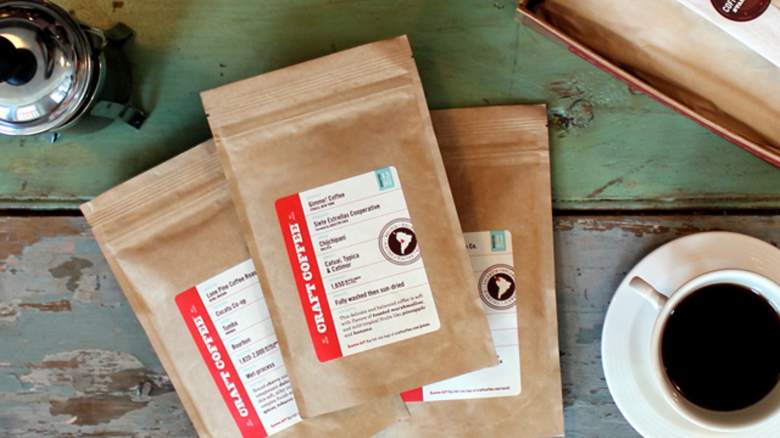
Craft Coffee’s angle offers a price-match promise, allowing you to get a coffee subscription on a grocery store budget. They roast all their coffee beans fresh and ship within days of roasting.
Craft Coffee is on our list because of its price-match promise offering. They also give customers free shipping and do not require a commitment, which many people appreciate.
When you purchase a subscription, you start out taking a coffee survey to receive a customized suggestion on the best coffee type for you.
They also have a more individualized grind selection, allowing you to choose your grind based on your brewing method.
Subscribe to Craft Coffee Here
Intelligentsia

The Intelligentsia company started as a group of humble coffee roasters. From the beginning, they have focused on sourcing the highest quality coffee beans they can through fair trade.
They offer coffee subscriptions on in-season coffee beans from regions around the world. When shopping on their site, you can filter your options via coffee type, flavor profile, country of origin, and other varieties.
Intelligentsia has a handful of brick-and-mortar stores in the U.S. They’ve established a solid reputation as authorities in the coffee community.
Yes Plz Coffee
Yes Plz is the perfect coffee subscription for young millennials and Gen Zers looking for an artisanal experience.
Yes Plz roasts their own coffee at their facility in Los Angeles, which makes them different from other subscription systems that source from other roasters.
Their coffee is not single-origin but a blend of hand-selected coffee beans to provide a bright and warming experience. They offer caffeinated and decaf options.
Blue Bottle

Blue Bottle Coffee is another specialty roaster-turned-subscription service. They have locations along the coast in sunny California, plus a spot in Japan! They offer single-origin and blend options from regions around the world.
When you shop on their site, you can filter your options based on region, processing, and coffee type.
Verve Coffee
Verve Coffee is a unique roaster that offers single-origin coffee, blends, instant, espresso, decaf, flash brew, and cascara (made from the coffee fruit vs. the bean).
They source from various regions as well and clearly describe the flavor profiles on each coffee option. However, they do not let you customize your grind type, so you’ll definitely want to own a coffee grinder if you purchase from Verve.
Counter Culture
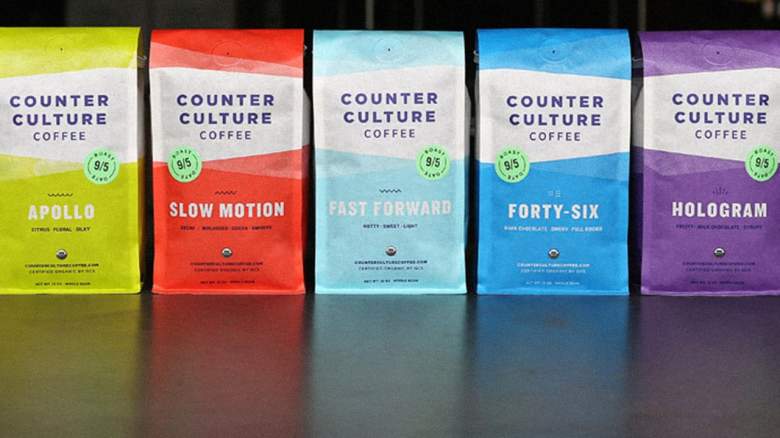
Counter Culture partners with growers around the world to source their coffee beans. They are a certified B corporation committed to high standards and sustainable practices.
Their subscription system is simplistic yet effective. You simply select the coffee you want to try based on the flavor profile, and they do the rest.
They are not as customizable as some of the other options. With Counter Culture, you choose your flavor profile, but you cannot select specific regions or processing types.
Luna
Luna coffee sources from regions in Ethiopia, Honduras, Kenya, and Columbia. Their brand is all about light and bright coffee. They are a smaller company, but they are committed to best practices that support coffee farmers worldwide.
They offer guides on the flavor profiles and tasting notes of their coffees in the descriptions, but you cannot customize your roast or grind type.
Alma
Alma is unique because the founders are farmers from Honduras who have been farming coffee for generations. Their coffee is USDA certified organic and fair trade. They provide subscribers with coffee that’s direct from their farm.
They offer eight different options for subscribers in various flavor profiles and roast blends.
Kahawa 1893
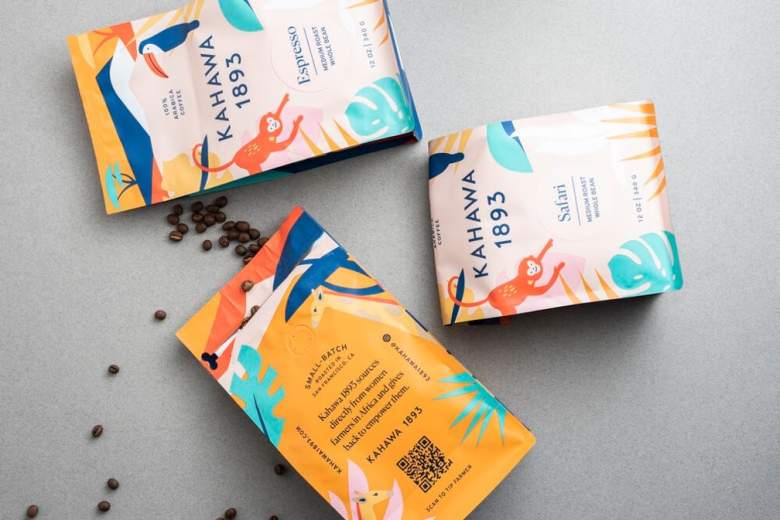
Kahawa 1893 sources their beans directly from female Rwandan and Kenyan farmers. Their farmers are all paid above industry standards.
Their beans are roasted twice a week in San Francisco before being shipped out to customers. They sell beans in diverse flavor profiles, roasts, and types, from single origin to blend to cold brew to decaf!
Chamberlain Coffee

Chamberlain Coffee roasts their beans fresh at their facility in California. They source their coffee beans from suppliers across the globe, including regions like Peru, Colombia, Sumatra, and Mexico. All of the beans they source are sustainably produced, certified organic, and fair trade.
They’re probably one of the more unique subscription companies on this list because they offer coffee by the bag and in single-serve options! All their coffees are blends, so they do not carry single-origin options.
Don’t want to go the subscription route for your coffee needs but still want to taste some amazing internationally-sourced roasts? I highly recommend Volcanica coffee (especially the Brazil Peaberry—my personal favorite!).
A Brief History of Coffee
Coffee originated in Ethiopia. The origins of the discovery of coffee In Ethiopia are bound up in the legend.
Allegedly, an Ethiopian goat herder discovered this magical beverage (not originally as in beverage form) around 700 AD. He noticed his goats were acting oddly energetic and attributed their behavior to the red berries they were eating. The legend goes that the goat herder, Kaldi, shared the red berries with a monk, who used them to stay awake all night to pray.
The story goes that another monk disapproved of these berries and threw them into the fire. That’s when they noticed the pleasant aroma of what became known as roasted coffee.
Some of the earliest documented cases of coffee being used as a beverage come from the 15th century in Yemen, where monks used it during prayer. The port city where the imported beans first arrived was called Mocha, hence why “mocha” has become synonymous with coffee.
Over the next century, it spread throughout Asia and Europe.
Coffee Regions and Their Flavor
Today, there are three primary regions where coffee is grown:
- Central and South America
- Africa and the Middle East
- Southeast Asia
These areas are prime coffee-growing locations because of their tropical and subtropical climates and their elevations above sea level.
Although coffee is grown the same way by regions with similar latitudinal perimeters, the taste of coffee from these regions is quite different and distinct. This is why coffee aficionados commonly state that “geography is a flavor.”
The aspects that define the flavors of coffee include weather, sunshine, rain, altitude, soil chemistry, and processing methods.
Central and South American Coffee Regions
In Central America, coffee beans are usually grown in Nicaragua, Guatemala, El Salvador, Costa Rica, and Honduras.
Costa Rica is known as the crown jewel of the Central American coffee region. It grows coffee with distinct aromatic flavors. As a whole, though, Central American coffee beans are known for being medium-bodied, mild, and well-balanced. They have a bright taste, used in coffee shops around the world.
In South America, coffee is grown in Brazil, Ecuador, Colombia, and Bolivia. Colombian coffee is one of the most popular coffees, although Brazil produces the highest volume globally.
South American coffee is known for being mild-bodied and creamy, with a chocolate aftertaste.
Africa and the Middle East Coffee Regions
In Africa, coffee is mainly grown in Ethiopia, Kenya, and Tanzania, although Rwanda, Uganda, and Burundi also grow coffee beans.
African-grown coffee produces a delightful morning fix with a sweet, delicate, fruity aroma. African coffee has a full-bodied flavor.
Ethiopian Arabica beans have a reputation for superior quality and flavor. The three main varieties are Shortberry, Mocha, and Longberry.
In the Middle East, Yemen is the key coffee producer. Yemen coffee farmers are known for dry-processing their beans, which creates a full-bodied and bright, spicy brew.
Southeast Asia Coffee Regions
Indonesia and Vietnam began producing and consuming coffee in the late seventeenth century.
Indonesian coffee comes from the islands of Sulawesi, Java, and Sumatra, which produce full-bodied, earthy, rich beans. Their coffee beans have a juicy taste and a nutty aroma.
Vietnam’s coffee produces delicate, mild, medium-bodied beans. Vietnam is actually the world’s second-largest exporter of coffee, next to Brazil.
Sumatra coffee has one of the best reputations on the planet. They’re known for low acidity and rich, earth-dark chocolate tastes.
Understanding the regions where your coffee is grown helps you anticipate the type of flavor those coffee beans will yield.
Single Origin vs. Blend
You will often see the term “single origin” used by coffee retailers. This means that the coffee beans are sourced from one crop, producer, or region in one country.
Single-origin coffee is different from coffee blends, which mix various single-origin coffee beans.
Coffee retailers utilize blends to maintain a consistent flavor profile. Single-origin coffees can be inconsistent since their flavor is dependent on the ever-changing climate.
What’s the big deal about single-origin coffee, and why do so many coffee artisans gravitate toward single-origin?
Single-origin coffees offer a purer experience of coffee. They have more pronounced aromas, flavors, and acidity than blends.
One isn’t necessarily better than the other, but single-origin coffees are certainly a more adventurous experience than blends. If you like pour-over coffee or drip coffee that you drink black versus espresso coffee you combine with milk and sugar, you would likely prefer single-origin coffee.
Coffee Roasting Methods and Grind Type
Another thing to know before signing up for a coffee subscription is how the retailer roasts their coffee.
There are two main categories of roast: light to medium and medium to dark.
Light to medium roasted coffee is higher in caffeine and typically features light notes of fruit, berries, citrus, and chocolate. Medium to dark roasted coffee tends to have a richer, more full-bodied, and bold flavor, with notes of chocolate.
You should also consider whether the coffee retailer offers ground coffee or whole bean coffee. If the coffee uses the whole bean, you will need to purchase a coffee grinder.
Quick Guide to Coffee Makers
Before you decide on a coffee subscription, you need to establish which coffee maker will work best for your routine, lifestyle, and preference.
Coffee is an art. The way you grind your beans and brew your coffee affects your beverage’s overall texture and flavor.
Drip Coffee Makers
Drip coffee is the most common brewing method in the United States because it is an automated process that requires minimal effort. You simply put your grounds and water in your machine and let it do its work.
Drip coffee is the type of coffee you would find at your office, although you can surely find fancier machines.
Pour-Over Coffee
Pour-over coffee is also known as brewed coffee. This manual process involves pouring hot water over coffee grounds situated within a filter. The water then drains through the coffee into the carafe or other apparatus.
French Press Coffee
The French press is a beginner-friendly way to make freshly brewed coffee. With the French Press, you add grounds and hot water into the press, stir, and let it sit for a few minutes. Then you push the filter down through the device, leaving the brewed coffee behind.
The French Press is an immersion brewing technique.
Percolator Coffee
A percolator uses the pressure of steam to push water through coffee grounds, creating brewed coffee. The percolator is another beginner-friendly method popular in European countries and for outdoorsy folks who make their coffee over a fire.
Picking Your Coffee Brewing Method
Choose your coffee brewing method based on your lifestyle and preference. The French Press is a quick-brew method that creates strong and intense coffee. Pour-over or drip coffee methods usually take no more than five minutes and offer a smooth and silky flavor.
The percolator can take between 10 to 15 minutes to brew, resulting in a robust and bold flavor profile.
Once you know your flavor preferences and brewing method, you’re in an excellent place to start a coffee subscription.
